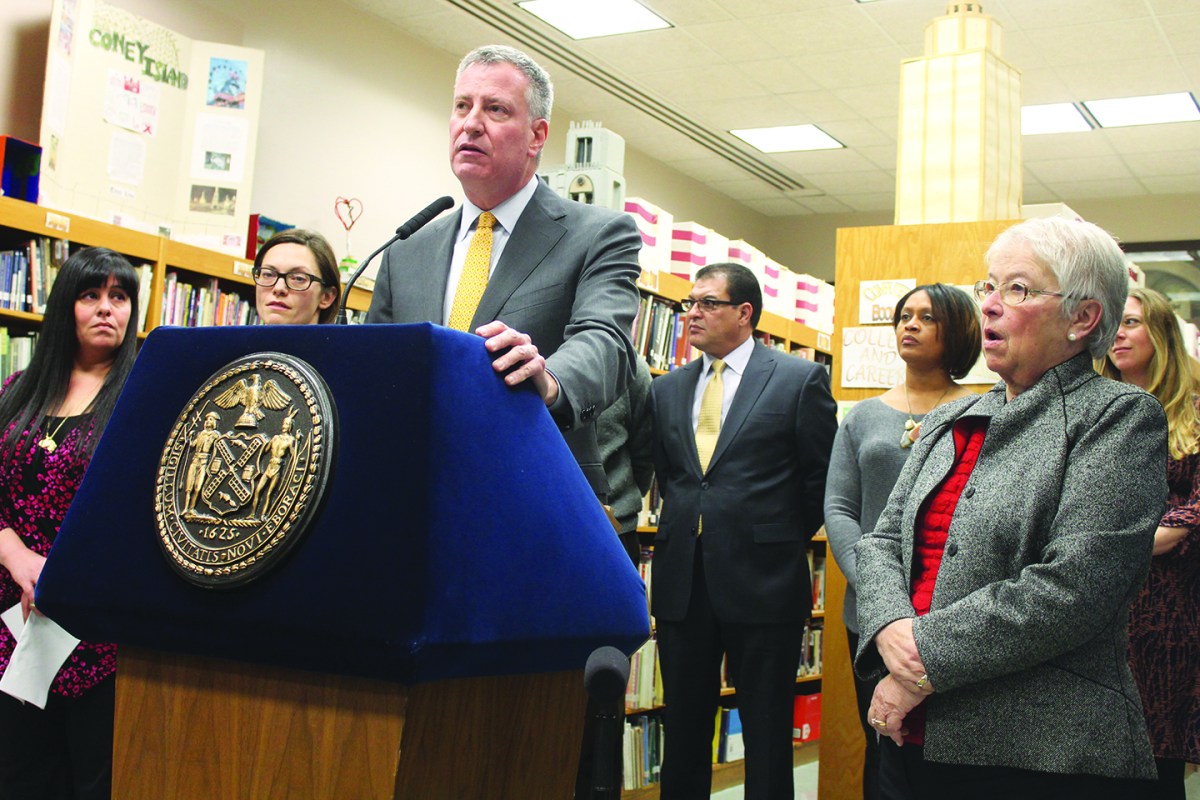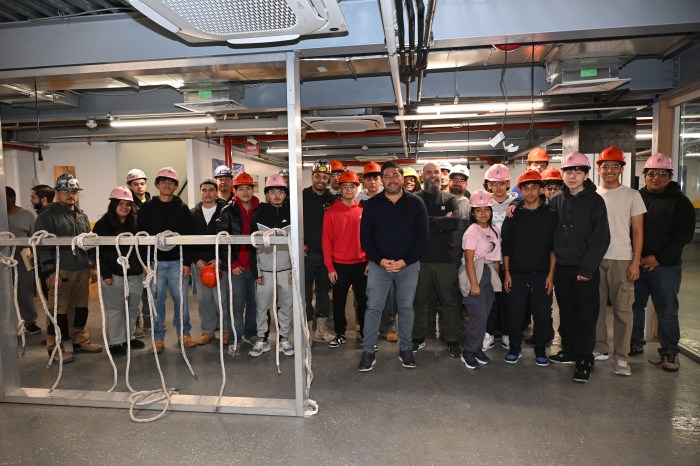Rosemarie Crowder, a mother of four — including three who attend the High School of Telecommunications Arts & Technology — feels like she has no way of knowing whether or not her children are in trouble during the school day.
“Because I’m a parent, I worry,” said Crowder from the Brooklyn high school’s first floor library at a press conference by Mayor Bill de Blasio and Schools Chancellor Carmen Farina to announce the end of the city’s controversial school-wide ban on cell phones.
If approved by the Panel for Educational Policy in February, the ban will be lifted on March 2.
The announcement was a relief to parents like Crowder.
“I worry from the time my children walk out the door until they come back home because so many things can happen,” she said, citing safety as her number-one concern. “This is why having the cellphone ban lifted is so important.”
Telecommunications Principal Xhenete Shepard agreed, echoing Farina’s excitement about the educational opportunities ahead.
“I think it’s about time we stop fighting technology and start to integrate it into our day-to-day,” said Shepard, who started at the school as a student teacher in the 90s. “There aren’t students who don’t have this in their lives from early on so it’s about time that we take the initiative . . . and start to imagine how we can use these computers we carry in our hands to educate our kids.”
The change in the eight-year-old policy will remove cellphones and electronic communication devices such as iPhones and iPads from the list of banned items in schools, and create a new regulation, A-413, that specifically governs their use in schools.
Under the new regulation, principals and their teams will decide for themselves what they will do in terms of regulating use (from storing the cellphones once students are inside the building to allowing the use of mobile devices for instructional purposes in some or all classrooms).
Schools that do not develop a written cellphone policy promptly will function under a default policy that allows students to bring cellphones into the building, but requires that the school or students store the phones out of sight for the duration of the school day.
“When the ban came into effect, when my daughter Chiara was in middle school, [my wife and I] saw the cellphone as something that was fundamental to our ability as parents to keep in touch with her, to make sure she was doing the right thing, and to make sure she was where she was supposed to be,” said de Blasio, calling cellphones an “extension” of him and wife, Chirlane, as parents. “Then we saw our city government stand in the way of that.
“[This reform] has been a long time coming,” he said, calling the previous administration out of touch with modern parenting, “but it is time now to take the common sense action which will give parents a peace of mind and give parents the ability to do, what I think, is their most important job . . . and keep kids safe in the process.”
“I do feel this is a long time coming,” echoed Farina, stressing that the responsibility now lies in the hands of the students. “Our challenge [now] is to make sure that students understand that this is a privilege and not a God-given right, and use it responsibly or else.”
According to Farina, student leadership committees will sit down to fine-tune the policy and focus on what schools do — and do not — want to see following the change.
RECOMMENDED STORIES
- Forest Park sinkhole all patched up
- Permits filed for building at new Cornell Tech campus
- McDonald’s longtime Bell Boulevard restaurant shuts its doors




































